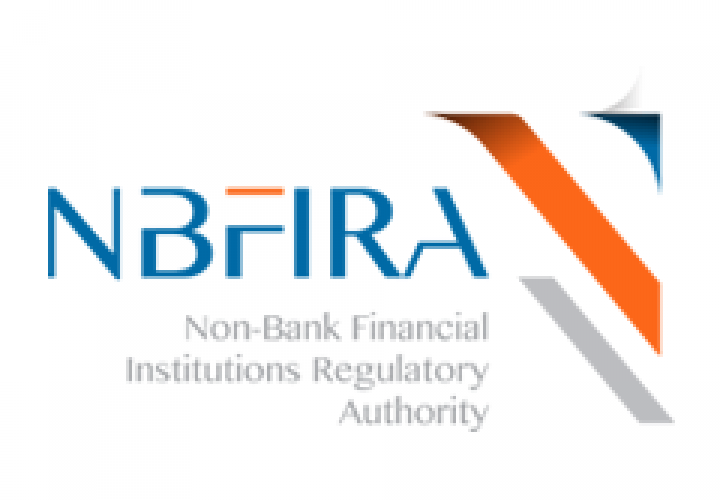Guidelines for The Capital Adequacy Requirements for Custodians
PART I
GUIDELINES FOR THE CAPITAL ADEQUACY REQUIREMENTS FOR CUSTODIANS
A number of regulatory bodies do not have Capital Adequacy Requirements strictly for Custodians because they are mostly banks and their financial requirements are embedded on the parent company (the Bank). The minimum capital requirement is calculated using the Risk-Weighted Assets. The capital to risk-weighted assets ratio is calculated by adding a bank's tier 1 capital and tier 2 capital and dividing the total by its total risk-weighted assets. A bank's tier 1 capital is its core capital, which is used when it needs to absorb losses without ceasing its operations.
- Financial Soundness.
1.1 A Custodian shall maintain a net worth of a minimum of P10,000,000. For purposes of this clause, the expression "net worth" refers to the Tier 1 Capital, i.e. the paid-up capital plus retained earnings as on the date of the application.
1.2 A Custodian shall be a bank licensed under the Banking Act.
1.3 Notwithstanding anything contained in clauses (1 and 2) above, any custodian which;
(a) has been approved by the Regulatory Authority under the provisions of the Securities Act No.26 of 2014 and the Securities (Institutions Licensing) Regulation, 2017, even if it does not have the net worth specified in clause (1) may continue to function as a custodian and shall within a period of one year from the date of commencement of these Guidelines raise its net worth to that specified in clause (1), Provided that the period specified above may be extended by the Regulatory Authority up to a maximum of 5 years;
(b) has made an application under Section 4 of the Securities Act and shall be permitted to fulfil its capital adequacy requirements within one month of receipt of the licence under regulation 5.
1.4 A custodian must maintain liquid assets equal to P15,000,000 or 3 months of annual expenditure at all times.
1.5 A custodian may not be an un-rehabilitated insolvent or be under liquidation or provisional liquidation.
1.6 The assets of a custodian, excluding goodwill and any other intangible assets must at all times exceed its liabilities, excluding loans validly subordinated in favor of creditors.
1.7 A custodian must maintain sufficient current assets to cover current liabilities at all times.
- Components of capital for purposes of capital adequacy
2.1 Core Capital (Tier 1)
Shareholders equity +
Retained earnings/disclosed reserves
2.2 Supplementary Capital (Tier 2)
Long term subordinated debt (75 years)
Some loan loss reserves
Undisclosed and revaluation reserves
- Professional indemnity and fidelity insurance
3.1 A custodian must maintain an indemnity insurance or fidelity insurance cover or both such insurances sufficient to cover the risk of losses due to fraud, dishonesty, negligence or any other dishonest acts or breaches of professional duty of its employees, directors or representatives.
3.2 The nature and extent of the insurance contemplated in clause (2.1) must be adequate and appropriate to the level and size of the business operations undertaken by the custodian.
3.3 If a custodian forms part of a group of companies, the professional indemnity insurance or fidelity insurance cover may be obtained at group level, but
(a) each entity that is covered by the group policy must be clearly identified in the policy documentation;
(b) the amount of cover must be sufficient to cover the amounts required for each individual entity’s situation, and
(c) each entity that is covered must have a certified copy of the policy documentation available for scrutiny by the Regulator should it be required.
3.4 The minimum professional indemnity or fidelity insurance cover must be
P30,000,000 (thirty million pula), or three times total revenue, whichever is greater), the excess of which must not exceed 20% of the total insured.
- Transactions affecting financial resources.
4.1. A custodian shall obtain prior written consent from the Regulatory Authority before;
(a) Seeking to reduce or change the nature of its issued capital or the rights and obligations of its security holders;
(b) Acquiring 10% or more of the voting securities of another company; or
(c) Entering into any agreement to sell or merge the whole or any part of the registered firm to or with a third party.
- Reporting.
5 .1 A custodian should notify the Regulatory Authority immediately if the required capital falls to 120% of minimum capital requirement or falls by 50% since the last regulatory return.
PART II
GENERAL OBLIGATIONS AND RESPONSIBILITIES OF CUSTODIANS
- Code of conduct.
1.1 Every custodian shall abide by the Code of Conduct as set out in The First Schedule.
- Segregation of activities.
2.1 Where a custodian is carrying on any activity besides that of acting as custodian, then;
(i) the activities relating to its business as custodian shall be separate and segregated from all other activities;
(ii) its officers and employees engaged in providing custodial services shall not be engaged in any other activity carried on by him.
- Review, monitoring, evaluation and inspection of the systems and controls.
- 1 Every custodian shall have adequate mechanisms for purposes of reviewing, monitoring and evaluating the custodian's controls, systems, procedures and safeguards.
3.2 The custodian shall cause to be inspected annually the mechanism referred to in clause (1) by an expert and forward the inspection report to the Regulatory Authority within three months from the date of inspection.
- Prohibition of assignment.
4.1. No custodian shall assign or delegate its functions as a custodian to any other person unless such person is also a licensed custodian.
4.2. Every custodian shall open a separate custody account for each client, in the name of the client whose securities are in its custody and the assets of one client shall not be mixed with those of another client.
- Agreement with the client.
5.1 Every custodian shall enter into an agreement with each client on whose behalf it is acting as custodian of securities and every such agreement shall provide for the following matters, namely:─
(a) the circumstances under which the custodian will accept or release securities, [assets or documents] from the custody account;
(b) the circumstances under which the custodian will accept or release monies from the custody account;
(c) the circumstances under which the custodian of securities will receive rights or entitlements on the securities of the client;
(d) the circumstances and the manner of registration of securities in respect of each client; and
(e) details of the insurance, if any, to be provided for by the custodian.
- Internal controls.
6.1 Every custodian shall have adequate internal controls to prevent any manipulation of records and documents including audits for securities and rights or entitlements arising from the securities held by it on behalf of its clients.
6.2 Every custodian shall have appropriate safekeeping measures to ensure that such securities, [assets or documents] are protected from theft and natural hazard.
- Maintenance of records and documents and furnishing of information.
7.1 Without prejudice to the provisions of any other law for the time being in force, every custodian shall maintain the following records and documents as per the requirements of the Corporate Governance Rules, namely:─
(a) records containing details of securities, [assets or documents] received and released on behalf of each client;
(b) records containing details of monies received and released on behalf of each client;
(c) records containing details of rights or entitlements of each client arising from the securities held on behalf of the client;
(d) records containing details of registration of securities in respect of each client;
(e) ledger for each client;
(f) records containing details of instructions received from and sent to clients; and
(g) records of all reports submitted to the Regulatory Authority.
7.2 Every custodian shall ensure free access by the Regulatory Authority, to the place where the records and documents under clause (1) are maintained.
7.3 Every custodian shall preserve the records and documents maintained under Clause (1) for a minimum period of seven (7) years.
- Appointment of compliance officer.
8.1 Every custodian shall appoint a compliance officer who shall be responsible for monitoring the compliance of the Act, Rules and Regulations, notifications, guidelines, instructions, etc., issued by the Regulatory Authority and for handling complaints.
8.2 The compliance officer shall immediately and independently report to the Regulatory Authority any non-compliance observed by him.
- Information to the Regulator.
9.1 The Regulatory Authority may, at any time, call for any information from a custodian with respect to any matter relating to its activity as custodian.
9.2 Where any information is called for by the Regulatory Authority under Clause (1), it shall be the duty of the custodian to furnish such information within such reasonable period as the Regulatory Authority may specify.
FIRST SCHEDULE
CODE OF CONDUCT
- The custodian shall maintain the highest standard of integrity, fairness and professionalism in the discharge of its duties.
- The custodian shall be prompt in distributing dividends, interest or any such accruals of income received or collected by it on behalf of its clients on the securities held in custody.
- The custodian shall be continuously accountable for the movement of securities in and out of custody account, deposit, and withdrawal of cash from the client's account and shall provide complete audit trail, whenever called for by the client or the Regulatory Authority.
- The custodian shall establish and maintain adequate infrastructural facilities to be able to discharge custodial services to the satisfaction of clients, and the operating procedures and systems of the custodian shall be well documented and backed by operations manuals.
- The custodian shall maintain client confidentiality in respect of the client's affairs.
- Where custodian records are kept electronically, the custodian shall take precautions necessary to ensure that continuity in record keeping is not lost or destroyed and that sufficient back up of records is available.
- The custodian shall create and maintain the records of securities held in custody in such manner that the tracing of securities or obtaining duplicate title documents is facilitated, in the event of loss of original records for any reason.
8. The custodian shall extend to other custodial entities, depositories and clearing organisations all such co-operation that is necessary for the conduct of business in the areas of inter custodial settlements, transfer of securities and transfer of funds.
9. The custodian shall ensure that an arms-length relationship is maintained, both in terms of staff and systems, from its other businesses.
10. Every custodian shall exercise due diligence in safe-keeping and administration of the assets of its clients in its custody for which it is acting as custodian for.
11. (a) A custodian or any of its employees shall not render, directly or indirectly any investment advice about any security in the publicly accessible media, whether real-time or non-real-time, unless a disclosure of its interest including long or short position in the said security has been made, while rendering such advice.
(b) In case an employee of the custodian is rendering such advice, he shall also disclose the interest of his dependent family members and employer including their long or short position in the said security, while rendering such advice.
Download Guidelines for The Capital Adequacy Requirements for Custodians







